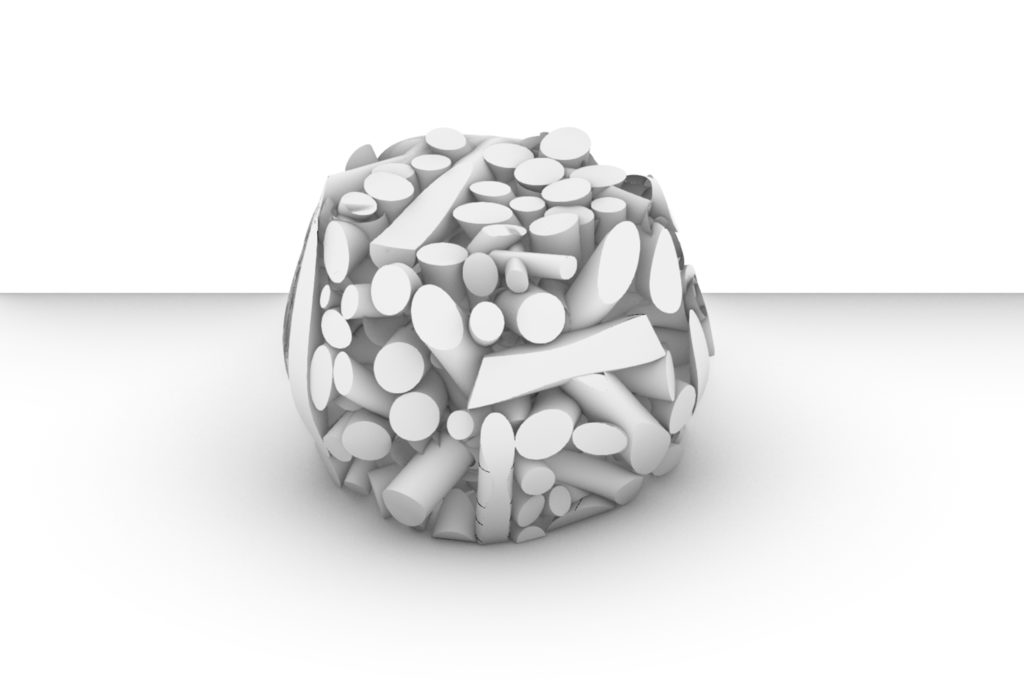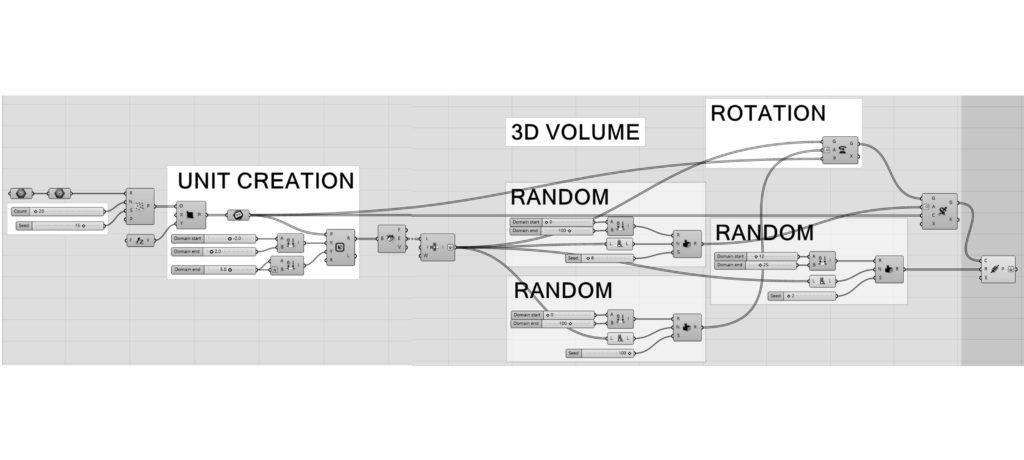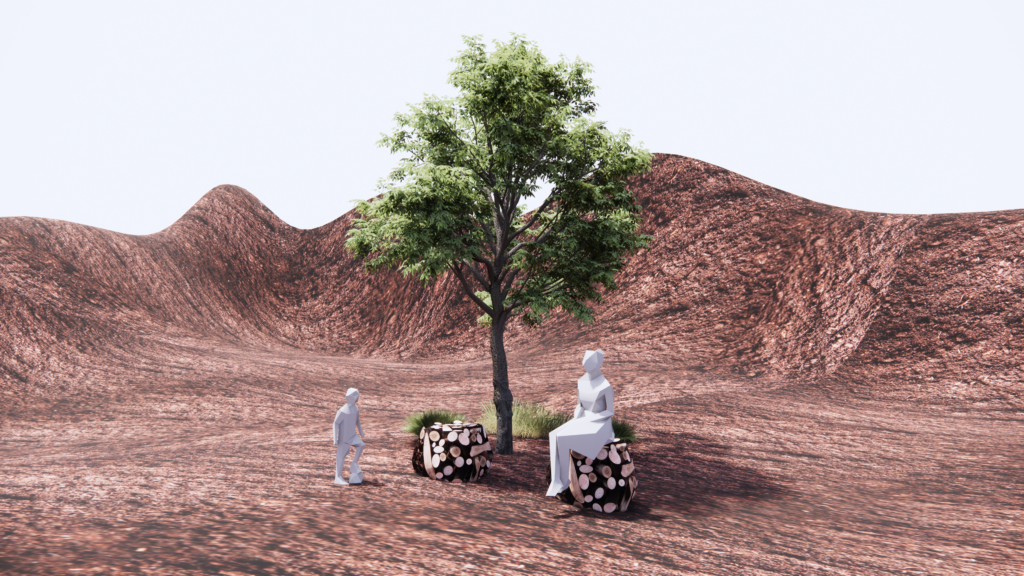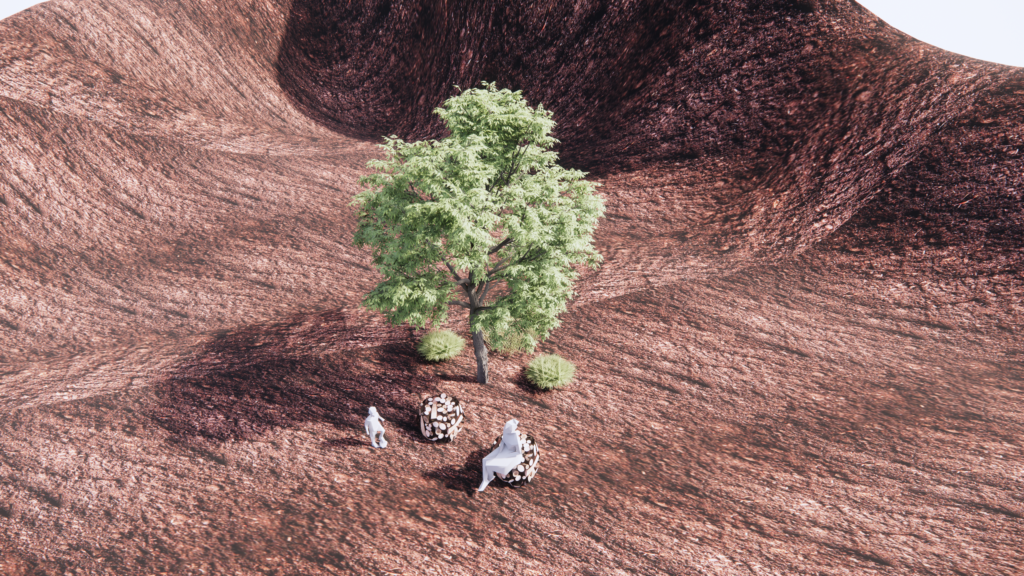Through the classes of this course, we practised and learned how to apply the parametric software Grasshopper as well as associated plug-ins into our computational designs. We implemented what we learned in our studio projects in order to comprehend it in real-time. Since our project did not require any direct fabrication through 3d software, we decided to recreate our model on Rhino for our reference and understanding.
- Rhinoceros Output

2. Grasshopper Coding Output

With our mentor, Mateus Sartori, we decided to use Grasshopper to create the configuration required to form a random arrangement that acts as branches for our studio project, Mil Ramas. The random arrangement is mirrored in real life as each branch is randomly applied on to the core structure based on stability alone. We faced a few challenges in the script-making as a few commands would not achieve the results we required.
3. Enscape Rendering


The process of making the 3D model required both grasshopper and a few intervening commands from Rhino, as Grasshopper alone was not able to perform the trimming we needed to attain the shape desired for our seat.
In theory, the computational file is necessary to have for documentation purposes and perhaps recreation, however in practicality due to the nature of the branches and each tree being unique, no two seats can truly be a replica of one another. We appreciated this fact, as it made our sculpture seating more valuable and distinctive.

